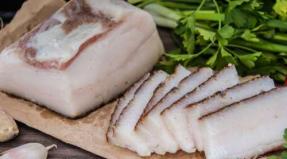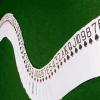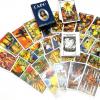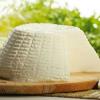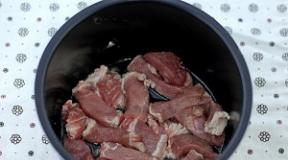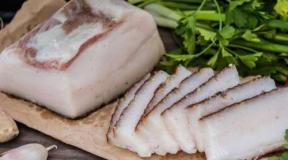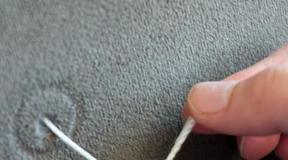Festive menu in Tatar language. Tatar cuisine. National Tatar dishes
Tatar national cuisine embodies the centuries-old cultural traditions of the people, their history and ethnic customs. It is rightfully considered one of the most delicious cuisines in the world. Its dishes have specific and original shades of tastes and aromas that have come from the distant past to the present day, preserving their characteristic features and features almost in their original form.
The specificity and originality of Tatar cuisine is very closely intertwined with the natural and socio-economic conditions of life of the Tatar people, with their history and culture.
The history of Tatar cuisine
Modern Tatars descended from Turkic tribes who lived on the territory of the state called Volga Bulgaria long before the invasion of the Mongol-Tatars. Even in those ancient times, it was a highly developed and enlightened state, uniting people of different religions and diverse cultures. It is no wonder that the formation of the national cuisine of the Tatars was significantly influenced by the proximity of neighboring peoples, as well as the Great Silk Road that passed through their territory and connected the East with the West.
The Golden Horde period also contributed to the development of the culinary traditions of the Tatars, but the main ethnic roots of the Turkic peoples still prevailed in their national cuisine.
If the ancient Tatars were nomads, considering meat and dairy products their main food, then over time they increasingly switched to a sedentary lifestyle, began to engage in agriculture and cattle breeding, growing grain products, vegetables and fruits.
The most valuable traditional types of meat among the Tatars were and, to a lesser extent, were widespread. The meat was salted, smoked, dried, dried, boiled, stewed and fried, in a word, it was eaten in all kinds of forms.
The Tatars began breeding birds much later than grain or animals. However, this contributed significantly to the variety of their dishes. Also, the Tatar peoples have long mastered beekeeping, so they were provided for for a long time. In addition, they received a decent profit from the sale of wax and honey.
Features of Tatar cuisine and traditions of Tatar etiquette
Tatar cuisine is very interesting and varied. It was formed thanks to its ethnic traditions, rooted in the distant past. Its development was largely influenced by neighboring nations, introducing certain nuances to the foundations laid long ago.
The ancient Bulgars gave the Tatars bal-may, katyk and kabartma, they also inherited dumplings from the Chinese, supplemented the Tatar with pilaf, and the Tajik with sugar baklava. And all this is in addition to the national echpochmak and chak-chak. Tatar cuisine was both simple and luxurious, quite satisfying and varied, amazing with the abundance of delicious dishes and the combination of products that at first glance seemed completely incompatible.
But the Tatars were famous not only for their hearty and plentiful dishes, but also for their generous hospitality. According to the custom of our ancestors, only the best dishes that meet the most demanding tastes were always presented to the guests. The hospitable hosts put on the table exquisite sherbet, sugar chak-chak, hearty baursak, exquisite kosh-tele, sweet kaltysh-kaleve, linden honey and aromatic tea.
Among Eastern people, hospitality has always been at its best. It was believed that a person who does not love and cannot receive guests is unhealthy and inferior. It was the norm among Muslims to present rich gifts to a person who came to the house, not to mention a modest meal. Usually the guest also did not remain in debt and never came empty-handed.
 In the East, the prevailing phrase was: “Kunak ashy - kara karshi,” which translated meant “Guest treats are mutual.” Hospitality was absorbed by the eastern peoples with mother's milk. Even in ancient times it was honored by the Tatars. This especially struck the Baghdad caliph, who arrived at the invitation of the Bulgarian king Almush to help in accepting Volga Bulgaria into the Islamic faith.
In the East, the prevailing phrase was: “Kunak ashy - kara karshi,” which translated meant “Guest treats are mutual.” Hospitality was absorbed by the eastern peoples with mother's milk. Even in ancient times it was honored by the Tatars. This especially struck the Baghdad caliph, who arrived at the invitation of the Bulgarian king Almush to help in accepting Volga Bulgaria into the Islamic faith.
The king's sons warmly greeted the guests on the way, treating them to bread, millet and meat. And in the royal yurt the tables were literally bursting with an abundance of dishes and snacks. But what struck the ambassador most of all was the offer for the guests to take the remaining food with them after the meal.
Peter the Great was also amazed by the scope of Tatar hospitality when in May 1722, on his way to a campaign against Prussia, he stayed in the house of a wealthy Eastern merchant Ivan Mikhlyaev, where he celebrated his fiftieth anniversary. The servants, bowing to the floor to the sovereign, served cold appetizers, hot dishes, roasts, cakes and sweets, as well as numerous pies with excellent fillings.
The Muslim religion has also made significant adjustments to the rules of food intake. The Koran forbade the use of it as an unclean animal, and the falcon and swan, on the contrary, were considered sacred birds, which also made them inviolable.
During the holy month of the Islamic calendar, Ramadan, Muslims aged twelve years and older were required to abstain from drinking and eating during the day for thirty days.
Sharia also prohibited the consumption of alcoholic beverages. According to the Koran, it was believed that both good and bad were contained in it, but the content of the first was many times greater. The Prophet Muhammad said that wine is a source of sinful pleasure, and that it takes away the mind of the one who drinks it.
According to Islamic etiquette, the meal had to begin with the obligatory washing of hands. The meal began and ended with a prayer glorifying Allah. Men and women ate separately from each other.
The famous Tatar educator Kayum Nasyri described the rules of Tatar etiquette in one of his books:
- you had to sit down at the table without keeping yourself waiting;
- you need to eat only with your right hand;
- It was considered bad form to take food before respectable people at the same table;
- Moderation in food was encouraged.
Main dishes of Tatar cuisine
 The basis of Tatar cuisine, as in ancient times, is meat and plant foods, as well as dairy products. Horse meat, lamb and poultry were highly valued, and the most popular meat dishes were dumplings and pilaf.
The basis of Tatar cuisine, as in ancient times, is meat and plant foods, as well as dairy products. Horse meat, lamb and poultry were highly valued, and the most popular meat dishes were dumplings and pilaf.
Milk was mainly used as a basis for the production of katyk - the national Tatar drink, syuzma, kort or eremchek - cottage cheese, as well as butter.
All dishes of Tatar cuisine can be divided into:
- hot liquid dishes;
- second courses;
- baked goods with savory filling;
- baked goods with sweet filling;
- tea treats;
- beverages.
The first category certainly includes broths and soups. One of the most popular Tatar first courses is shulpa or shurpa. And also a unique highlight of oriental cuisine is tokmach - Tatar noodle soup.
A special place among the Tatars is occupied by dumplings, which are traditionally served with broth. Moreover, dumplings in the East are also called dumplings with various fillings, including cottage cheese, and hemp seeds. Dumplings are traditionally treated to a freshly baked son-in-law and his friends.
Second courses in Tatar cuisine include: meat and cereal dishes. The meat is most often boiled in broth and served as a separate dish, cut into thin slices and slightly stewed with onions, butter, etc.
Sometimes the main dish is boiled, also cut into small pieces. The most common side dish is potatoes. An indispensable attribute of second courses is served in a separate bowl.
The Tatars' national holiday dish is tutyrgan tavyk - chicken stuffed with eggs.
A special place is occupied by traditional Tatar pilaf, as well as bishbarmak, a national product made from meat and dough. Second courses also include tutyrma - lamb or beef intestine stuffed with and. Sausages made from horse meat - kazylyk and makhan - are considered delicious. Another Tatar delicacy is considered dried and - kaklagan urdek or kaklagan kaz.
Popular dishes in Tatar cuisine are prepared in various ways, as well as a variety of porridges: rice, millet, oatmeal, buckwheat, peas and others.
 Flour products of various shapes and types are considered traditional and characteristic of the oriental table. The dough for them is used as sour yeast dough, as well as butter dough and simple dough.
Flour products of various shapes and types are considered traditional and characteristic of the oriental table. The dough for them is used as sour yeast dough, as well as butter dough and simple dough.
The most typical for Tatar cuisine are products made from sour dough. First of all, this is bread. Among the Tatars it is called ikmek and is considered sacred food. From childhood, adults teach children to take care of bread. It was always the eldest member of the family who cut the bread during meals. They baked mainly from, and only the wealthiest, in quite rare cases, could afford bread from.
And how many stuffed dough products they have! One of the oldest is considered to be kystyby, or kuzikmyak - a flatbread made from unleavened dough, filled with millet porridge. Later they started filling it with mashed potatoes.
Another ancient dish is belish - a pie made from yeast or unleavened dough filled with fatty meat and potatoes or any cereal. Such a pie was made in small and large sizes, and on holidays - in a shape resembling a low truncated cone.
The national Tatar dish is considered to be echpochmak, which translated means “triangle” stuffed with pieces of fatty meat and onions. Also popular among them are peremyachi - products made from yeast dough stuffed with finely chopped boiled meat. Afterwards they were fried in cauldrons in a large amount of oil and served with broth, usually for the morning meal.
In villages, the so-called teke or bekken - large oval pies with vegetable filling - were especially popular. The most delicious were the bekkens with pumpkin filling. Similar pies with meat filling were called sumsa.
An interesting Tatar product is gubadia - a tall round pie with several layers of filling, usually including rice, Tatar cottage cheese kort, and dried fruits. Gubadiya is considered a mandatory dish at ceremonial receptions.
And of course, it is impossible to ignore the mass of sweet and rich products in Tatar cuisine: kosh-tele, pate, lavash, katlama, helpek and others. Such dishes are traditionally served with tea. Some of them have undergone significant changes, differing markedly from their Turkic predecessors, but at the same time they have acquired a certain zest and become exclusive national dishes of oriental cuisine.
These include: baursak - small honey dough balls; chak-chak – pieces of dough covered with honey syrup.
These two dishes are traditionally served at weddings. Chak-chak is always brought by the bride or her parents to her husband’s house, and such a treat is considered especially honorable at a wedding.
Other original sweet products are:
- kosh-tele – small airy donuts generously sprinkled with powdered sugar;
- talkysh-kaleve - a treat somewhat reminiscent of cotton candy, but a little denser.
Tatar cuisine always uses a large amount of fat. The most common of them are butter and melted lard.
Honey is also considered popular, which is served as a separate dish for tea, or various sweets are made from it.
The most famous Tatar drinks are rye kvass and dried fruits. Tatars are very fond of strong tea. It is believed that a hospitable host is obliged to give his guest tea. It must be drunk hot and strong, diluted with milk.
Another significant Tatar non-alcoholic drink is sherbet, which is a sweet honey drink. One of the wedding rituals was associated with it: in the groom’s house, guests were treated to such a drink, after drinking which the guests put money for the newlyweds on a tray.
Even taking into account the fact that Tatar cuisine is replete with fatty and rich foods, it is still considered useful and healthy. The thing is that it attaches special importance to liquid hot dishes, various cereals and fermented milk products. In addition, the Tatars widely use stewed and boiled food, where much more valuable substances are preserved.
Modern Tatar cuisine, of course, does not look the same as before, but national dishes are still in great demand. In addition to them, mushrooms and various types of pickles, tomatoes and other vegetable crops came into Tatar everyday life; exotic fruits, previously completely inaccessible, appeared on the tables.
Instead of conclusions
Tatar cuisine is one of the most colorful, nutritious, but at the same time healthy and healthy cuisines in the world. Its highlight is not only the abundance of various delicious dishes, but also the traditions of table etiquette, which make every guest feel like the king of the world. Tatar cuisine is distinguished by its simplicity and sophistication, the variety of dishes, their extraordinary taste and satiety.
The features of Tatar cuisine are known throughout Eastern Europe. It is difficult to find such original dishes anywhere else. The fact is that the culinary traditions of Tatar cuisine have developed over many centuries, so people treat them very reverently and carefully, and the secrets of national dishes are passed on from generation to generation.
The basis of Tatar cuisine is liquid hot dishes, such as soups and broths. Depending on the broth (shulpa) in which they are prepared, soups are divided into meat, dairy and lean, vegetarian, and according to the set of products that serve as a dressing, one can distinguish flour, flour-vegetable, cereal, cereal-vegetable and vegetable soups. The most popular first course is noodle soup (tokmach), the second is often served with meat boiled in broth and cut into large pieces, or chicken, as well as boiled potatoes.
A variety of porridges often appear in Tatar cuisine: buckwheat, millet, rice, oatmeal, and peas. As you can see, there are more than enough options. Today we will teach you how to cook some Tatar dishes. Believe me, you have never tasted such deliciousness.
1.Dumplings with hemp grain
Products:
1. Dough - 75 gr.
2. Minced meat - 100 gr.
3. Sour cream - 50 gr. (or 20 grams of melted butter)
4. Egg – 1 pc.
How to cook dumplings with hemp grain:
I option. Place the peeled hemp grains on the stove for several hours to dry them. Next, grind them in a mortar and sift through a sieve. Mix hemp flour with mashed potatoes and eggs. If the filling turns out too hard, it must be diluted with a small amount of hot milk. We prepare the dough in the same way as for other dumplings. Cook the dumplings in salted water, place on a plate, season with sour cream or melted butter. Serve hot.
Option II. Grind hemp grains in a wooden mortar, squeeze out excess fat, add salt, sugar, mix thoroughly until we get a thick, homogeneous mass. The prepared mass will be used as minced meat for dumplings. Prepare the dough in the same way as the option proposed above.
2. Jumper

Products:
For minced meat:
1. Meat - 500 grams
2. Onions - 3 pieces
3. Salt - to taste
4. Pepper - to taste
5. Fat (for frying)
How to prepare peremyach:
Make balls of 50 grams each from yeast or unleavened dough, roll them in flour and roll them into flat cakes. Place the minced meat in the middle of the flatbread and press lightly. Next, lift the edges of the dough and gather it nicely into an assembly. Remember that there should be a hole in the middle of the ball. The peremyachi must be semi-deep-fried: first with the hole down, and when browned, turn over with the hole up. The finished peremyachs have a light brown tint. The shape of the balls is round and flattened. The dish is served hot. You can also make the dough small, and you will save about half the required ingredients.
How to prepare minced meat: finely chop the washed meat (beef or lamb) and pass it through a meat grinder along with onions and peppers. Then add salt and mix well. If the minced meat turns out to be thick, you should add cold milk or water, and then mix again.
3.Tunterma (omelet)

Products:
1. Egg - 5-6 pcs.
2. Milk - 200-300 gr.
3. Semolina or flour - 60-80 gr.
4. Butter - 100 grams
5. Salt - to taste.
How to cook tunterma (omelet):
Place the eggs in a deep container and then beat thoroughly until smooth. After this, add milk, melted butter and salt. Mix thoroughly. Add semolina or flour and mix again until you get a thick mass. After this, pour the mixture into a greased frying pan and place on the stove. As soon as the dish thickens, put it in the oven for 4-5 minutes. Grease the top of the prepared tunterma with fat and serve. The dish can be cut into diamonds into portions.
4. Stuffed lamb (tutyrgan teke)

Products:
1. Lamb (pulp)
2. Egg - 10 pieces
3. Milk – 150 grams
4. Onion (fried) – 150 grams
5. Butter – 100 grams
6. Salt - to taste
7. Pepper - to taste.
How to cook stuffed lamb:
We take young lamb brisket or the pulp of the back of the ham. Separate the rib bone from the breast meat. We, in turn, trim the pulp from the back so that we get a kind of bag. Take a deep container. Beat eggs into it, add pepper, salt, melted and cooled butter. Mix the resulting mixture thoroughly. Pour the filling into pre-cooked lamb brisket or ham. We sew up the hole. Place the finished semi-finished product in a shallow bowl, fill it with broth and sprinkle with carrots and chopped onions. Place on the fire and cook until done.
Place the prepared tutyrgan teke in a greased frying pan, grease the top with oil and place in the oven for 10-15 minutes. After the specified time has passed, the stuffed lamb must be cut into portions. Serve hot.
5. Tatar pilaf

Products:
for 1 serving
1. Lamb (low-fat) - 100 gr.
2. Table margarine – 15 grams
3. Tomato paste - 15 grams
4. Water - 150 gr.
5. Rice - 70 gr.
6. Onions - 15 gr.
7. Bay leaf
8. Pepper - to taste
9. Salt - to taste.
How to cook Tatar pilaf:
Cut the meat into pieces, about 35-40 grams each, sprinkle with salt and pepper, fry, place in a saucepan and pour in tomatoes sautéed in fat and heated water. Bring to a boil, and then add the washed rice. We cut the onion. We also add the onion and bay leaf to the dish, cook over low heat, stirring gently, until the rice absorbs the liquid. Cover with a lid and let it brew. Traditional Tatar pilaf can be prepared without tomato. In this case, you need to add any chopped vegetables or even fruits instead (then the pilaf will turn out sweet).
6. Balish with duck

Products:
1. Dough - 1.5 kg.
2. Duck - 1 pc.
3. Rice - 300-400 gr.
4. Butter – 200 gr.
5. Onions - 3-4 pcs.
6. Broth - 1 glass
7. Pepper - to taste
8. Salt - to taste.
How to cook belish with duck:
Rice is traditionally added to belish with duck. First you need to cook the duck itself. After that, we cut it, cutting the pulp into small pieces. We sort the rice, rinse it in hot water, add it to salted water and boil it. Pass the cooked rice through a sieve and rinse with hot water. Any remaining rice should be dry. Add oil, salt, pepper to the rice, finely chop the onion. Mix all this thoroughly with duck pieces and make belish. The dough needs to be kneaded in the same way as for other belishes. Duck belish is made a little thinner than belish with broth. The dish needs to be baked for 2-2.5 hours. Half an hour before cooking, fill the dish with broth.
Remember that belish with duck is served in the same frying pan. The filling is placed on plates, and then the bottom of the belish is cut into portions.
7. Gubadiya with meat (Tatar wedding pie)

Products:
(for one pan of gubadia)
1. Dough - 1000-1200 gr.
2. Meat - 800-1000 gr.
3. Ready-made kort (red dry cottage cheese) - 250 gr.
4. Rice - 300-400 gr.
5. Raisins - 250 gr.
6. Egg - 6-8 pcs.
7. Ghee - 300-400 gr.
8. Salt, pepper - to taste
9. Onions
How to cook gubadia with meat:
Roll out the dough so that it is larger in size than the pan. Place it in an oil pan and grease the top with oil too. Place the finished court on the dough. On top of it we put rice in an even layer, fried meat minced with onions, another layer of rice on the meat, hard-boiled, finely chopped eggs on top of the rice. We finish again with a layer of rice. Place a layer of steamed apricots, raisins or prunes on top. Drizzle a decent amount of melted butter over the entire filling. Cover the filling with a thin layer of rolled out dough, pinch the edges and seal with cloves. Before placing the dish in the oven, the gubadia must be greased with oil on top again and sprinkled with crumbs. At medium temperature, gubadia should be baked for about 40-50 minutes. The prepared gubadia should be cut into pieces and served hot. When cut, the dish should demonstrate distinct layers of different products. They go well together not only in taste, but also in color.
How to prepare soft cork for gubadia: grind the dry cork and sift it through a sieve. For 500 grams of cort, add 200 grams of granulated sugar and 200 grams of milk. Mix all the ingredients thoroughly and cook for 10-15 minutes until we get a homogeneous mass. Cool the mass and place it on the bottom of the gubadiya in an even layer.
How to prepare crumbs for gubadia: mix 250 grams of butter with 500 grams of sifted wheat flour, add 20-30 grams of granulated sugar and rub thoroughly with your hands. As you grind, the butter should gradually mix with the flour. This way you will get fine crumbs. Before placing the gubadia in the oven, sprinkle the prepared crumbs on top.
8. Tutyrma with offal (homemade sausage)

Products:
1. By-products – 1 kilogram
2. Rice – 100 gr. (or 120 grams of buckwheat)
3. Egg - 1 pc.
4. Onions - 1.5 pcs.
5. Milk or broth - 300-400 gr.
6. Salt - to taste
7. Pepper - to taste.
How to cook tutyrma with offal:
We process the available offal (heart, liver, lungs), and then finely chop them. Take the onion and pass it through a meat grinder, or chop it. Add it to offal. Add salt, pepper, add egg and mix everything well. Dilute the resulting mixture with milk or cooled broth, add rice or buckwheat. Mix and fill the intestine with the mixture. Let's tie it up. Make sure that the filling for tutyrma is liquid. The dish should be cooked in the same way as tutyrma with beef. Also, tutyrma can be cooked with only one liver and cereal.
Tutyrma made from offal is considered a delicacy and is served as a second course. Traditionally, it is cut into circles and carefully placed on a plate. Tutyrma is served hot.
9. Kazan-style fried peas

Products:
1. Peas
2. Salt
3. Oil
4. Onion
How to cook fried peas in Kazan style:
Fried peas are considered one of the most favorite dishes among the Tatars. Before cooking, the peas must be sorted, rinsed with cold water, and then filled with warm water. After this, you need to leave the peas for 3-4 hours so that they swell. Make sure that it does not swell too much, as during frying the grains may simply fall apart in half. When the peas are soaked, strain them through a colander and only then start frying. There are several ways to prepare fried peas:
Method 1 (dry frying) – place the peas in a dry frying pan and fry, stirring.
Method 2 - pour a small amount of vegetable oil into a hot frying pan. When the oil is hot, add the peas and fry, stirring. Don't forget to add salt during frying.
3rd method - fry with cracklings that remain after melting the internal beef fat. Place the peas in the frying pan with the cracklings, stir and fry. During frying, add salt and pepper to taste.
10.Chuck-chuck

Products
(per 1 kilogram of wheat flour):
1. Egg - 10 pieces
2. Milk - 100 gr.
3. Sugar - 20-30 gr.
4. Salt - to taste
5. Oil for frying - 500-550 gr.
6. Honey - 900-1000 grams
7. Sugar for finishing - 150-200 gr.
8. Montpensier - 100-150 gr.
How to cook chak-chak:
Chak-chak is made from premium flour. Place raw eggs into a container, add milk, salt and sugar. Mix everything. Add flour and knead soft dough. Divide the prepared dough into pieces, approximately 100 grams each, and roll out into flagella about 1 centimeter thick. Cut the flagella into balls the size of pine nuts and fry, stirring, preferably deep-frying. When the balls are close to being ready, they begin to take on a yellowish tint.
Pour granulated sugar into the honey and bring to a boil in a separate container. A way to find out if the honey is ready: take a drop of honey on a match, and if the stream flowing from the match becomes brittle after cooling, then the boiling should be stopped. Remember that honey should not be boiled for too long, as it may burn. Then, of course, the taste of the dish will be spoiled. Place the fried balls in a wide bowl, pour over honey and mix thoroughly. At the end, you need to transfer the chak-chak onto a tray or plate and, with your hands dipped in cold water, give it any shape of your choice. In addition, chak-chak is often decorated with small candies (monpensiers).
"Super Chef" wishes you bon appetit!
Oriental cuisine is the result of the harmonious unity of ethnic traditions and the natural environment in which the gastronomic tastes and culinary preferences of the ancient people were formed. A good example is Tatar pastries! All gourmets in the world dream of enjoying amazing dishes, but we have prepared the best homemade baking recipes.
Where to start our “delicious” research? Of course, from the most popular vac-white. In Tatar this dish sounds like “vak-belesh”, which means “small”.
Composition of products (dough):
- filtered water - 30 ml;
- sifted flour - about 1 kg;
- egg;
- granulated sugar - 25 g;
- active dry yeast - 7 g;
- kefir/sour milk - 500 ml;
- table salt - 20 g.
List of ingredients (minced meat):
- pork and beef (30 and 70% respectively) - 600 g;
- onion - at least 500 g;
- spices (salt, pepper), spices - according to preference.
Cooking method:
- Pour dry yeast into a spacious bowl. If it is a fast-acting product, consisting of granules or powder, it does not need to be activated. Simply combine the composition with warm kefir or milk and mix thoroughly.
- We also add regular sugar, table salt, and an egg. We work well with a whisk, after which we add portions of flour. We continue preparing the dough until a homogeneous, slightly viscous mass is formed that sticks to our hands (in the middle of the kneading we switch to “manual control” of the process).
- Return the formed ball to the bowl, cover with film and a towel, and leave warm to rise. We knead the product several times, freeing it from carbon dioxide. Living bacteria must “work” freely!
- In the meantime, we wash the pieces of meat, divide them into small parts, and grind them in a home processor. Add finely chopped onion to the resulting mixture, season the minced meat with salt and pepper, mix well. The juiciness of the mass is ensured by the amount of onion (1:1 ratio) processed with a knife, not a meat grinder!
- Divide the dough into small portions and shape into flat cakes. Place the meat filling on each circle and tightly connect the edges of the donut. If desired, you can leave a small hole in the center.
- Fry the products in hot oil for 15 minutes, turning them over once they are golden brown on each side.
The most delicious wak-belyashi - exclusively hot!
Kyakyash - baked goods of national Tatar cuisine
Since not everyone is familiar with the names of the traditional dishes of this country, we will begin presenting the recipes with a brief description of each dish. Kyakyash is also popularly called “pyaryamach”.



Required components:
- vegetable oil - ½ cup;
- lamb/beef - 1 kg of low-fat product;
- eggs - 4 pcs.;
- premium wheat flour - 1.2 kg;
- onion - 5 pcs.;
- dry yeast - 50 g;
- whole milk - 1 l;
- regular sugar, table salt - 1 tsp each.
Preparation procedure:
- Grind the washed, cut into pieces meat in a food processor (use a wire rack with large holes). During the processing of the product, add peeled onions. Salt and pepper the resulting mass, mix the minced meat thoroughly.
- Heat the milk (not higher than 35 °C), place it in a spacious container. Beat in eggs (exclusively at room temperature), add a spoonful of regular sugar and coarse salt.
- Pour a pack of fresh dry/pressed yeast here and pour in half a glass of vegetable oil. Mix the composition, add portions of sifted flour, knead the dough. We leave it under a towel to rise. Don’t forget to knead the product several times to release carbon dioxide.
- We form balls from the dough, roll out the crumpets, and place a tablespoon of minced meat on each portion. We lift the edges of the cake without stretching them, collect them beautifully in the center, leaving a small hole. This is how we design all our products.
- Place the pieces in very hot oil, hole side down, and fry until golden brown. Place the baked goods on napkins to absorb excess fat and serve.
If you look at the kyakash from above, the baked goods are very reminiscent of the sky with a miniature sun inside. It seems?
Cabartma with potatoes
Luxurious yeast dough donuts are cooked in a kettle of boiling oil or fried over an open flame in the oven. That’s how many faces Tatar cuisine is!

Required components:
- butter (butter (50 g) and sunflower for frying);
- granulated sugar - 25 g;
- yeast (preferably dry Saf-moment) - 11 g;
- egg;
- sifted flour - up to 750 g;
- potatoes - 300 g;
- salt - 20 g.
Preparation procedure:
- We dilute yeast in milk, not forgetting to add regular sugar. We are waiting for the appearance of a lush “cap”.
- In the meantime, sift a heap of flour and salt into a bowl, make a small depression into which we pour the risen yeast mixture. Beat in the eggs, add pre-melted butter.
- We make a batch of dough that is not very steep and slightly sticks to your hands. We send it to a warm place for an hour and a half, covering the container with film. During the process of ripening the product, knead it twice. An oven heated to 40°C will be a great place to quickly rise the baked goods.
- Peel the potatoes, boil them in slightly salted water, and puree them in a blender until smooth.
- Divide the fluffy dough into about 20 pieces and shape them into buns. We do not use flour at this stage under any circumstances, otherwise the donuts will lose their airiness and will not turn out amazingly golden.
- Leave the decorated products on an oiled baking sheet under a towel for 15 minutes to proof, then bake for 20 minutes in the oven (180°C).
- We take out the pastry, grease the bottom part with a thin layer of mashed potatoes, return to the heat of the oven, and cook until golden brown.
Treat hot kabartma with aromatic oil and serve.
Kurnik in Tatar
Just by the name you can guess that this dish is a Tatar version of poultry pie.

List of components:
- sunflower oil - 54 ml;
- raw egg, yolk;
- whole milk - 40 ml;
- boiled chicken meat - 400 g;
- potato tubers - 3 pcs.;
- filtered water - 150 ml;
- salt;
- regular sugar - 10 g.
Step-by-step preparation:
- Place fresh yeast, an egg, a teaspoon of table salt and white sugar into a convenient bowl. Pour in lukewarm drinking water, stir the mixture, and leave it warm. In 20 minutes, living bacteria will transform the composition into a foamy “cloud”.
- Sift the flour, pour the mixture that has risen into it, and knead the dough thoroughly. At the end of the process, rub in 40 ml of fresh oil. We form a ball from the product and leave it in a warm place for further ripening.
- Peel the potatoes and cut into small cubes. Shred the pre-boiled poultry fillet in the same form.
- Divide the dough in half. From one part we form a layer up to 1.5 cm thick. Place the flatbread in a heat-resistant form, and distribute the composition of pieces of tubers and chicken meat on top.
- Season the filling with salt and pepper, cover it with a layer obtained from the second half of the dough. Its trimmings will be used to decorate the upper part of the product. We make flagella or create other elements for decorating baked goods.
- Carefully pour portions of milk between the layers of dough, treat the pie with yolk, and bake in the oven for 45 minutes at 200°C.
Serve the ruddy Tatar-style kurnik hot.
Chak-chak baursaks with water
“Tricky-cunning” sweet pastries. What's surprising about this delicacy? Nothing special, except that the clever craftsmen “managed” to wrap air in the dough!



List of products:
- lean butter, melted fat - 100 ml;
- eggs - 5 pcs.;
- baking soda and table salt - a pinch;
- premium flour - up to 300 g;
- granulated sugar - 30 g.
The main secret to getting delicious baursaks is to use frozen eggs and add a small amount of drinking water to the baking oil.
Cooking process:
- We leave the eggs in the freezer, then thaw them at room temperature, and then beat them into a spacious bowl.
- Add salt, regular sugar and soda. We combine the products, sift the flour into them, and knead the dough. We get a mass that is softer in consistency than for homemade noodles.
- Divide the formed ball into approximately 5 servings. Roll each part into “sticks” and cut them up to 3 cm wide.
- Place portions of milk in a spacious metal container and add a glass of filtered water.
- Place pieces of dough into the cold mixture, shake the dish slightly so that the products do not stick to the bottom, and heat the components of the dish.
- Constantly stir the increased volume of the baked goods, watching as the liquid gradually boils away and the baked goods brown appetizingly.
- We initially place the finished delicacy on paper napkins, then on a dish, pouring honey or pre-cooked sugar syrup.
For the Tatar people, chak-chak baursaki has not only always been a delicious food, but also a symbol of hospitality!
Tatar pie Kystyby
And here are fried flatbreads, prepared in the form of peculiar pancakes, in which stew, porridge or potatoes are hidden. We choose the filling according to preference!

Grocery list:
- sunflower and butter - 100 ml and 50 g, respectively;
- drinking water - 200 ml;
- premium flour - from 260 g;
- heated whole milk - 20 ml;
- table salt - 25 g;
- wheat cereal - 200 g;
- potatoes - 4 pcs.
Cooking method:
- Boil tubers and millet in slightly salted water. Pound soft potatoes until pureed. When the mixture has cooled, add heated milk and mix the mixture thoroughly.
- Place drinking water, salt, 40 ml of vegetable oil and sifted flour into a bowl. Make a batch of stiff dough, leave it to “rest” for half an hour, covered with a towel.
- Roll out the product until almost transparent. We do this not only with a rolling pin, but also with our hands, stretching the layer in different directions. It’s okay if the sheet breaks in some places: it won’t be noticeable in the finished product!
- We treat the surface of the thinnest cake with melted butter and sunflower oil. Place a layer of potato filling and roll the product into a roll. Place it on a greased baking sheet, forming a snail shape. From the presented products we will get about 9 delicious “clams”.
- Place the baked goods in the oven for 30 minutes, heated to 180°C.
Serve hot multi-layer Tatar Kystyby with an amazingly crispy crust.
Folk dish - echpochmak
The next presentation is unleavened or yeast pies filled with meat and potatoes.



Required components:
- vegetable oil (50 ml), butter (to taste);
- honey - 90 g;
- beef - 500 g;
- potatoes - 3 pcs.;
- premium flour - 1 kg;
- onion - 2 pcs.;
- salt, pepper, herbs;
- dry yeast - 12 g;
- meat broth - to taste.
Cooking technique:
- Combine honey, yeast, vegetable fat, 500 ml of drinking water, and sifted flour in a convenient bowl. Make a batch of soft dough, leave it for 2-3 hours to rise.
- We wash the piece of meat, blot it with napkins, and cut it into the smallest cubes. In the same form, chop the peeled potatoes, chop the greens, add a pinch of salt. Mix everything well.
- Roll out the dough, divide it into quadrangles, put the potato and meat filling on one side of each flatbread, and cover with the free part of the crumpet. When decorating the products in the form of triangles, we connect the edges on both sides, leaving one open.
- Place the echpochmak on an oiled baking sheet and place in a cold oven for 45 minutes. Bake at 200°C.
List of products (dough):
- margarine/butter, sour cream - 100 g each;
- baking powder - ½ tsp;
- kefir - 250 g;
- egg;
- premium flour - up to 400 g;
- regular sugar - 20 g.
Filling:
- egg;
- granulated sugar - 70 g;
- rice - 200 g;
- dried fruits (dried apricots, raisins, prunes) - a handful;
- kyzyl eremsek (red cottage cheese) - 100 g;
- a pack of butter.
Chit:
- premium flour - 390 g;
- regular sugar - 50 g;
- butter fat - 20 g.
Cooking method:
- Sift the flour into a bowl, place the grated (chopped) butter. Grind the fat and bulk ingredients until crumbly. Add egg, baking powder, kefir, salt and sugar. We knead the dough and put it in the refrigerator.
- Boil rice in salted water and cook hard-boiled eggs.
- Leave the dried fruits in drinking liquid for a while, rinse well and dry. Cut prunes and dried apricots into small pieces.
- Combine cereals and dried fruits, mix thoroughly.
- Take out the chilled dough and divide it into two unequal pieces. Roll out most of the product and place it in a baking dish coated with butter.
- Next, place rice and dry berries and fruits, throw pieces of butter on them. Sprinkle the food with chopped eggs and cover them with pink cottage cheese (eremsek).
- We repeat the layers again, cover them with the second rolled out cake, leaving a piece of dough. We fix the edges of the layers, make a small hole in the middle of the top sheet, where we place the ball molded from the set aside dough.
- Mix the crumb ingredients and rub the mixture with your hands. Grease the surface of the pie with butter and sprinkle with the sweet mixture.
Bake gubadia for 40 minutes at 180°C. Cut the multi-layered dish into portions and serve.
Traditional pies with potatoes, meat and onions
Tatar cuisine has become famous for its huge amount of delicious baked goods. However, it is impossible to ignore the most popular meat and potato pies.

Set of components:
- natural butter - 200 g;
- baking soda 12 g;
- premium flour - 550 g;
- eggs - 4 pcs.;
- a pinch of salt;
- kefir - 250 g.
Filling:
- potatoes - 300 g;
- butter - to taste;
- onions - 2 pcs.;
- spices (salt, pepper).
Cooking:
- Combine kefir, baking soda and salt in a spacious bowl. We are waiting for bubbles to stop appearing in the composition.
- Grind the flour and chopped butter until crumbly. Add eggs and kefir mixture. Make a batch of soft dough, leave the product for half an hour under a towel.
- Finely chop the tubers and meat, chop the onion, pepper and salt the mixture, mix well.
- Pinch off a small portion of the total dough mass and roll out the ball into a not very thin circle. Place a spoonful of filling, secure the edges of the donut like a khinkali, leaving a fairly large hole in the center.
- Place the pies on a baking sheet lined with baking paper and place the pieces in the oven for 20 minutes (200°C).
- After the specified time, the broth formed in the products will boil away. Place a piece of butter in each portion and continue cooking for another 10 minutes. At the end of the process, brush the pies with egg.
Place the golden-brown pastry in a closed container, serve it slightly cooled as a separate dish, or add the dish to hot soup.
Delicious Tatar pastries will captivate you immediately and forever! That’s why we wish everyone temle bbulsyn ashigyz, which means “bon appetit.”
November 6 is the Constitution Day of the Republic of Tatarstan. Today, ceremonial events are taking place in cities and regions - this is one of the main holidays of the republic. We invite you to plunge into the holiday atmosphere by preparing dishes of Tatar cuisine.
The culinary traditions of Tatar cuisine have evolved over many centuries. The people carefully keep the secrets of national dishes, passing them on from generation to generation. Liquid hot dishes - soups and broths - are of primary importance in Tatar cuisine. Depending on the broth (shulpa) in which they are prepared, soups can be divided into meat, dairy and lean, vegetarian, and according to the products with which they are seasoned, into flour, cereal, flour-vegetable, cereal-vegetable, vegetable. The most common first course is noodle soup (tokmach). For the second course, serve meat or chicken boiled in broth, cut into large pieces, and boiled potatoes. During dinner parties, especially among city residents, pilaf and traditional meat and cereal belish. In Tatar cuisine, all kinds of porridges are often prepared -millet, buckwheat, oatmeal, rice, pea, etc. are highly valuedproducts made from sour (yeast) dough. These primarily include bread (ikmek). Not a single dinner (regular or festive) can pass without bread; it is considered sacred food. In the past, the Tatars even had a custom of swearing with ip-der bread.
Let's learn how to cook delicious Tatar dishes. Eat and enjoy!
Tutyrma with offal
By-products - 1 kg, rice - 100g or buckwheat - 120g, egg - 1 pc., onion - 1.5 pcs., milk or broth - 300-400g, salt, pepper - to taste.
Process the by-products (liver, heart, lungs), chop finely, add onion and mince (can be chopped). Add pepper, salt, beat the egg and mix everything thoroughly, then dilute with milk or cooled broth, add rice (or buckwheat) and, after mixing, fill the intestine and tie. The filling for tutyrma should be liquid. Cook in the same way as tutyrma with beef. You can cook tutyrma with only one liver and cereal. Tutyrma made from offal is considered a delicacy and is served as a second course. Usually it is cut into circles and beautifully placed on a plate. Serve tutyrma hot.
Tatar pilaf
Lamb (low-fat) - 100 g, table margarine and tomato paste - 15 g each, water - 150 g, rice - 70 g, onion - 15 g, bay leaf, pepper, salt - to taste.
Chop the meat into pieces weighing 35 - 40 g, sprinkle with salt and pepper, fry, put in a saucepan and pour hot water over the tomato sautéed in fat. When the liquid boils, add the washed rice. Add the chopped onion and bay leaf and cook over low heat, stirring gently, until all the liquid has been absorbed by the rice. Close the lid and let stand. Traditional Tatar pilaf can be prepared without tomato; instead, you should add any chopped vegetables or even fruits (the pilaf will turn out sweet).
Peremech
for minced meat:
meat 500 g, onion bunch 3 pcs., salt, pepper, liquid, fat for frying
Balls weighing 50 g are made from yeast or unleavened dough, rolled in flour and rolled out into flat cakes. Place minced meat in the middle of the flatbread and press down. Then lift the edges of the dough and gather them nicely into an assembly. There should be a hole in the middle of the crossbar. The peremechs are semi-deep-fried, first with the hole down, then, when browned, they are turned over with the hole up. The finished swords should be light brown in color and have a round, flattened shape. Peremetches are served hot. The shifts can be made small. In this case, you need to take half as much food.
Preparation of minced meat.
Finely chop the washed meat (beef or lamb) and put it through a meat grinder with onions, add pepper, salt and move everything carefully. If the minced meat is thick, add cold milk or water and mix again.
Stuffed lamb (tutyrgan teke)
Lamb (pulp), egg - 10 pcs., milk - 150g, onion (fried) - 150g, butter - 100g, salt, pepper - to taste.
To prepare teke, take the brisket of young lamb or the pulp of the back of the ham. Separate the rib bone from the breast meat, and trim the flesh from the back so that a pouch is formed. Separately, break the eggs into a deep bowl, add salt, pepper, melted and cooled butter and mix everything well. Pour the resulting filling into a pre-prepared lamb brisket or ham and sew up the hole. Place the finished semi-finished product in a shallow bowl, pour in broth, sprinkle with chopped onions, carrots and cook until tender. When the tutyrgan teke is ready, place it in a greased frying pan, grease the top with oil and put it in the oven for 10-15 minutes. Stuffed lamb is cut into portions and served hot.
Balish with duck
Dough - 1.5 kg, duck - 1 piece, rice - 300-400g, butter - 200g, onion - 3-4 pieces, broth - 1 glass, pepper, salt - to taste.
Rice is usually added to belish with duck. First cut the finished duck into pieces, then cut the flesh into small pieces. Sort the rice, rinse in hot water, put in salted water and lightly boil. Place the boiled rice in a sieve and rinse with hot water. Cooled rice should be dry. Add oil, finely chopped onion, the required amount of salt and pepper to the rice, mix all this with duck pieces and make belish. Knead the dough in the same way as for the previous belishes. Duck belish is made thinner than belish with broth. Belish bakes for 2-2.5 hours. Half an hour before it is ready, broth is poured into it.
Belish with duck is served in the same frying pan. The filling is placed on plates with a large spoon, and then the bottom of the belish is cut into portions.
Tunterma (omelet)
5-6 eggs, 200-300 g milk, 60-80 g semolina or flour, 100 g butter, salt to taste.
Release the eggs into a deep bowl, beat thoroughly until smooth, then add milk, melted butter, salt, mix everything well, add semolina or flour and mix again until the consistency of thick sour cream.
Pour the mixture into a greased frying pan and put on fire. As soon as the mixture thickens, place in the oven for 4-5 minutes. Grease the top of the finished tunterma with fat and serve. You can cut tunterma into diamonds into portions.
Dumplings with hemp grain
75 g dough, 100 g minced meat, 50 g sour cream or 20 g melted butter, 1 egg.
I option. Place the peeled hemp grains in the oven to dry for 1-2 hours, crush them in a mortar, and sift through a sieve. Mix hemp flour with mashed potatoes and eggs. If the filling turns out too stiff, dilute it with a small amount of hot milk.
Prepare the dough in the same way as for other dumplings. Boil the dumplings in salted water, place on a plate, season with sour cream or melted butter and serve hot.
Option II. Grind hemp grains in a wooden mortar, squeeze out excess fat, add sugar, salt, mix everything well to obtain a thick, homogeneous mass. This mass is used as minced meat for dumplings.
Prepare the dough in the same way as in option 1.
Gubadia with meat
For one frying pan of Gubadiya: dough - 1000-1200 g, meat - 800-1000 g, ready-made korta - 250 g, rice - 300-400 g, raisins - 250 g, eggs - 6-8 pcs., melted butter - 300- 400 g, salt, pepper, onion, onion.
Roll out the dough to a size larger than the frying pan. Place it in an oiled frying pan and grease the top with oil. Place the finished court onto the dough. Place rice on it in an even layer, then fried meat minced with onions, another layer of rice on the meat, hard-boiled, finely chopped eggs on top of the rice, and again rice. Place a layer of steamed apricots, raisins or prunes on top. Then pour ghee generously over the entire filling.
Cover the filling with a thin layer of rolled out dough, pinch the edges and seal with cloves. Before putting it in the oven, gubadia should be greased with oil and sprinkled with crumbs. Gubadiya is baked in an oven at medium temperature for 40-50 minutes. Cut the finished gubadia and serve hot in pieces. Gubadia in cross-section should present clearly defined layers of various products, harmoniously combined both in taste and color.
Preparing a soft court for gubadia.
Crush the dry cork and sift through a sieve. For 500 grams of cort, add 200 g of granulated sugar, 200 g of milk, mix everything and boil for 10-15 minutes until a homogeneous mass resembling gruel is formed. Cool the mass, then place it in an even layer on the bottom of the gubadiya.
Preparing crumbs for gubadia.
In 250 g of butter, put 500 g of sifted wheat flour, 20-30 g of granulated sugar and rub it all thoroughly with your hands. As you grind, the butter mixes with flour and fine crumbs form. Before putting the gubadia in the oven, sprinkle crumbs on top. Gubadiya is a rich round pie with multi-layer filling. The filling consists of kort (dried cottage cheese), boiled fluffy rice, chopped egg, steamed raisins (apricots or prunes), minced beef with sautéed onions.
Fried peas in Kazan style
Peas, salt, butter, onion
Fried peas are a favorite dish of the Tatars. Before frying, sort out the peas, rinse with cold water, then add warm water and let them swell for 3-4 hours. You need to make sure that they do not swell too much, otherwise the grains may fall apart during frying. Strain the soaked peas through a colander and start frying. There are several methods of frying.
Method 1 (dry frying) - place the peas in a dry frying pan and fry, stirring.
2nd method - pour a little vegetable oil into a hot frying pan, as soon as it gets hot, add peas and fry, stirring, add salt while frying.
3rd method - add peas to the cracklings remaining after melting the internal beef fat and mix together with the cracklings. While frying, add salt and pepper to taste.
Chak-chak (nuts with honey)
For 1 kg of wheat flour: 10 pcs. eggs, 100 g milk, 20-30 g sugar, salt, 500-550 g butter for frying, honey 900-1000 g, 150-200 g sugar for finishing, monpensier 100-150 g.
Prepared from premium flour. Place raw eggs into a bowl, add milk, salt, sugar, mix everything, add flour and knead into a soft dough. Divide the dough into pieces weighing 100 g, roll them into flagella 1 cm thick. Cut the flagella into balls the size of a pine nut and fry them, stirring so that they deep-fry more evenly. The finished balls take on a yellowish tint.
Pour granulated sugar into honey and boil in a separate bowl. The readiness of honey can be determined as follows: take a drop of honey on a match, and if the stream flowing from the match becomes brittle after cooling, boiling should be stopped. You cannot boil honey for too long, as it can burn and spoil the appearance and taste of the dish.
Place the fried balls in a wide bowl, pour over honey and mix well. After this, transfer the chak-chak to a tray or plate and, with your hands moistened in cold water, give it the desired shape (pyramid, cone, star, etc.). Chak-chak can be decorated with small candies (monpensier).
Tatar cuisine is the result of a centuries-old history of the development of an entire people, which was influenced not only by the living conditions and cultural and religious characteristics of the Tatar people, but also by the traditions of neighboring peoples: the Mari, Chuvash, Bashkirs and others.
Features of Tatar cuisine
- The religion of the Tatars - Islam - imposes certain prohibitions on the consumption of certain types of meat: pork, as well as swan and falcon meat. In addition, alcohol is prohibited.
- Tatars love rich, fatty soups and broths, pilaf - in general, their dishes are very satisfying and nutritious.
- Most of the main dishes of Tatar cuisine can be prepared in a cauldron or cauldron. This feature is characteristic of this national cuisine because for a long time these people were nomadic.
- Tatar cuisine has many recipes for baking in interesting shapes with various fillings, served with different types of tea.
- It is difficult to find such an ingredient as mushrooms in traditional recipes, but modern housewives add it to both baked goods and main dishes.
Main ingredients of Tatar cuisine
Since the Tatars were originally a nomadic people, the basis of their national cuisine is meat - lamb, horse meat, beef, chicken, duck, game. According to Islamic traditions, Tatar cuisine recipes do not use pork, which is considered dirty meat. The remaining types of meat are prepared in different variations: they are used to cook soups and broths, and are used in preparing main courses and filling pies.
The second most common ingredient in Tatar cuisine is various cereals. Tatars love porridges: rice, peas, millet, buckwheat. They cook them with the addition of vegetables or dried fruits.
Tatar cuisine is rich in a variety of baked goods, so the third most important ingredient is dough, mainly yeast, from which fluffy, soft pastries are obtained. Tatar housewives bake both small pies and large closed and open pies with various sweet and savory fillings. The main flour product, like among many peoples of Eurasia, is bread - among the Tatars it is called ikmek.
Another important ingredient of Tatar cuisine is dairy products. Milk in its pure form is practically not used - it is turned into sour cream, kefir or cottage cheese. Katyk is prepared from cow or horse milk by fermentation. The resulting fermented milk product is used to prepare the popular refreshing drink ayran. Katyk is also the base for the Tatar curd product syuzme, from which the Tatar cheese called kort is prepared by long evaporation.
Popular dishes of Tatar cuisine
Listed below are the most popular dishes among the people, which form the basis of the Tatar diet.
- Pelmeni - as in Russian cuisine, are made from unleavened dough and filled with minced meat or vegetables. The highlight of Tatar dumplings is the addition of hemp grains.
- Tatar pilaf - cooked with lamb or beef in a deep cauldron in animal fat with the addition of vegetables or even fruits (sweet version).
- Belish is a traditional open-faced pie with duck, lots of onions and rice.
- Peremyach - round flatbreads with filling, baked in the oven.
- Tutyrma is a Tatar sausage made from offal with spices.
- Chak-chak is a widely known delicacy in Russia, which is prepared from dough with honey.
- Tatar broth shulpa is more reminiscent not of broth, but of a real Russian soup with a lot of ingredients: meat, vegetables, noodles.
- Azu – fried meat with vegetables.
- Kystybai - unleavened flour flatbreads with a variety of delicious fillings from meat, cheese, and vegetables.
- Tunterma is a nutritious omelette with the addition of wheat flour or semolina to give it a thick consistency.
- Echpochmak are small triangle pies with potato and meat filling.
- Elesh is a round pie filled with potatoes, chicken fillet and onions.
- Chebureks are fried flat pies filled with minced meat.
- Koimak – small pancakes made from yeast dough fried in the oven.
- Kabartma is thin long noodles made from dough. Other types of Tatar noodles: chumar, umach, salma, tokmach.
Cooking methods
The peculiarities of preparing Tatar dishes, which are associated with traditions that have developed among the people for centuries, are also interesting.
The Tatar oven, in which pastries and other national dishes are prepared, is slightly different from the usual Russian oven: it has a cauldron attachment and a smaller bed.
The main technique of Tatar cooking is baking and stewing. Frying is used quite rarely: only for making pancakes.


